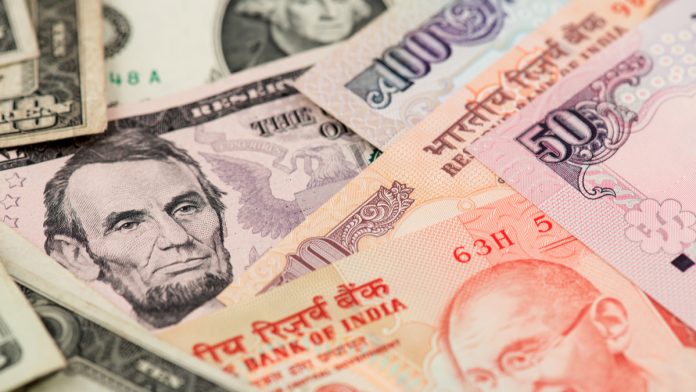- Indian Rupee (INR) falls for a fourth day.
- India’s positive economic outlook could support the Rupee.
- US Dollar (USD) falls versus its major peers.
- The Fed is expected to leave rates unchanged.
The US Dollar Indian Rupee (USD/INR) exchange rate is rising for a fourth straight day. The pair rose 0.05% in the previous session, settling on Tuesday at 83.45. At 10:00 UTC, USD/INR trades 0.35% at 83.47 and trades in a range of 83.39 to 83.57.
The Indian rupee is extending its losses in cautious trade ahead of the Federal Reserve’s rate decision. The Rupee fell on Tuesday amid month-end U.S. dollar demand from importers. On Monday, the rupee experienced its worst intraday fall in more than two weeks amid weakness in major Asian currencies.
However, the ongoing confidence and optimism in India’s economic stability and outlook could help to create a floor under the currency.
According to the National Council of Applied Economic Research, the Indian economy is estimated to grow by 7% this financial year.
Separately, according to data from the Reserve Bank of India, India’s foreign exchange reserves contracted by 2.83 billion to 640.33 billion as of April 19th.
The US Dollar is rising against the Rupee but falling against its major peers. The US Dollar Index, which measures the greenback against a basket of major currencies, trades -0.10% at the time of writing at 106.22, after gains in the previous session.
The US dollar is edging lower after mixed data and ahead of the Federal Reserve interest rate decision later today.
US manufacturing activity contracted in April after briefly expanding in March; meanwhile, the jolts jobs openings also fell by more than expected.
However, ADP payrolls were slightly stronger than economists had forecast, with 194,000 jobs being added in the private sector. This is up from the revised 208,000 in March and well ahead of the 179,000 forecast.
Attention now turns to the Federal Reserve interest rate decision. The Fed is widely expected to leave interest rates unchanged at the 22-year high of 5.25% to 5.5%. However, Federal Reserve chair Jerome Powell will likely acknowledge that inflation is stickier than expected, though he’s unlikely to go as far as to say that the Fed could consider hiking interest rates. A hawkish Fed could lift the USD.





